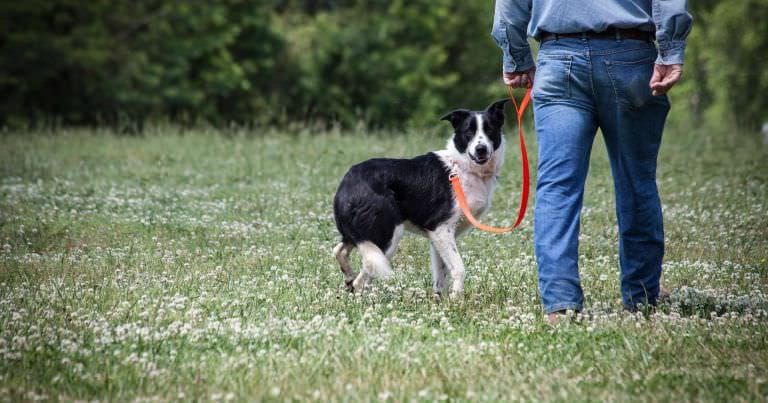Our dog’s attention is the foundation for all training.
Building the focus and attention of our dogs is the foundation on which learning can take place. Without our dog’s attention, no teaching is likely to take place. Instead, they will be distracted by other things around them.
I divide this into two types of attention behaviour.
The first is requested attention or name recognition. We call our dog’s name, and they stop what they are doing and focus on us.
The second is an automatic focus. This automatic behaviour is voluntary, where our dog ‘checks in’ with us.
As with all training, the most important thing to remember is that training takes time and consistency. So be consistent with rewarding the choices we want our dogs to continue to use and keep it fun for all.
Building our Dog’s Attention on us: How to train Name Recognition
We want to start in an environment where our dogs can easily give us their attention. At home in a quiet room is a great choice.
As we progress our training, the environment can become more distracting. As always, we want to set our dogs up for success at each stage of training. Have some tasty rewards ready in your hand. We want this to be fun for our dog to try, with ten rewards in the beginning. Rewards in hand, we prepared to start:
Training Tips:
Initially, roll the treats out from side to side. So your dog is always in front of you. Once they have this stage, start mixing it up — some off to the side, some behind you, some near and some far.
If your dog starts to lose motivation to look at you quickly. Reduce the number of repetitions. If ten times is too many, try six or four. Your dog is an individual; adjust the training to suit their stage. Build strong foundations first, then build more on top later.
If your dog doesn’t respond, choose a more relaxed environment.
Building our dogs focus: How to train Automatic Focus.
With automatic focus, we are teaching our dogs to ‘check in’ with us without us asking them for their attention. This option may seem like a strange thing to train.
However, think of when our dogs are off-lead. Happily investigating those wonderful smells or playing with another dog. If we have trained them to check in with us, we have a much easier time calling them back or giving other instructions. Auto-focus can also be used as a check-in before doing something with our dogs. Initial training would start at home:
Training Tips:
As this is a voluntary behaviour, we can start using it everywhere — Mark and reward whenever your dog chooses to ‘check in’ with you by looking at you.
Start to use it when your dog would like to do something. For example, we are walking down the path, and our dog wants to sniff a tree. Stand still with your dog on the lead until they look at you. Use their marker for looking at you, then walk with your dog to the tree. It’s a ‘please can I’ and ‘of cause’ type of conversation.
Once we can have this conversation with our dogs, you’ll find it much more fluid when outdoors, even if your reply needs to be ‘no sorry’ on occasion. Try your best to keep it that the ‘of cause we can’ outweigh the ‘No sorry’s.
Life with our dogs is about communication, not domination!
Creating conversation opportunities between our dogs and ourselves empowers everyone. It gives us confidence in our ability to communicate with our dogs and control them when needed. In addition, it provides our dog confidence to ask questions and understand our responses.
When we have the basics of name recognition and automatic focus, we progress these behaviours into everyday situations. Reduce the food reward element and use life rewards instead.



